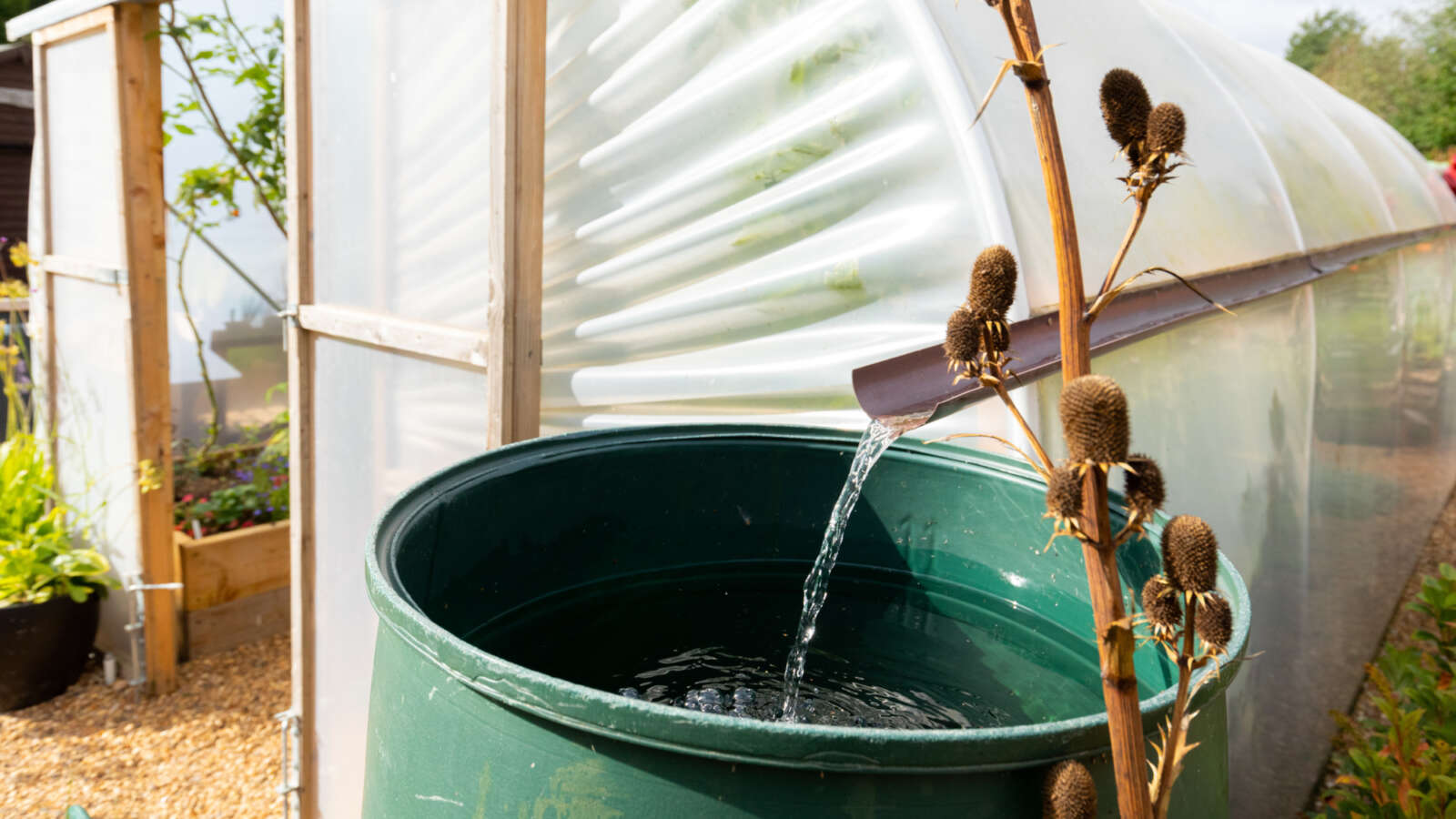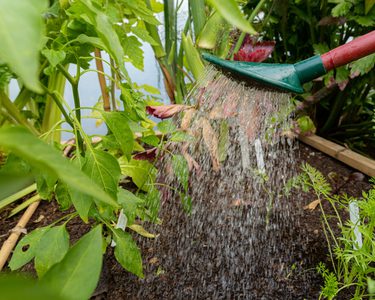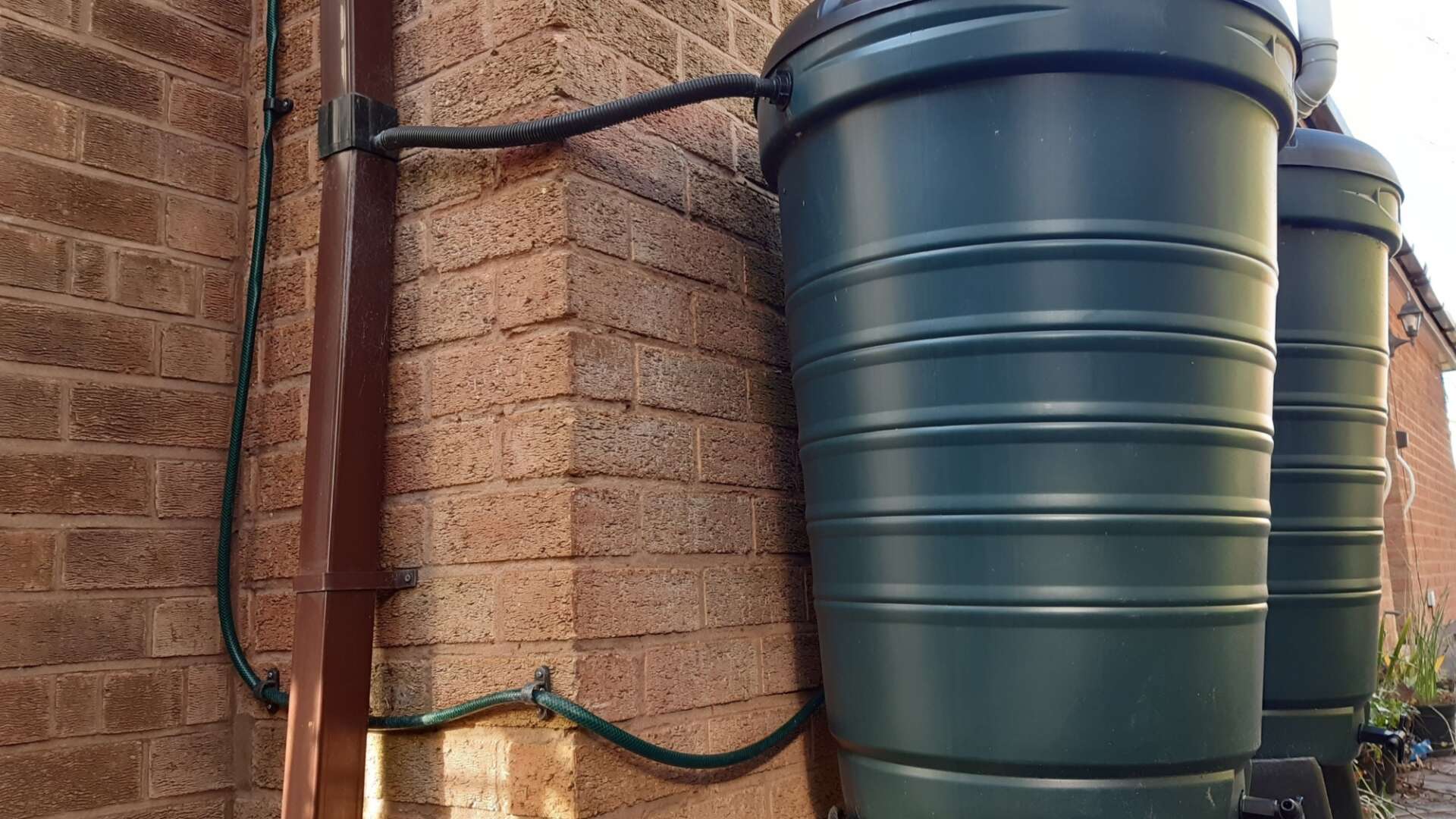
Watering guide
Collecting rainwater is just one of the ways to save this increasingly precious resource.
Water scarcity is something we’re all becoming more familiar with as our climate warms and we experience more droughts and hosepipe bans. But watering your garden efficiently and collecting water is one way you can help preserve it for your plants – and protect the planet.
Prepare ahead
Ensuring your soil is alive with organic matter and mulching for water retention are the best ways to reduce how much water you use and protect your garden ahead of low rainfall. Add a mulch of well-rotted compost or manure and it will enable your soil to retain moisture and nutrients for longer. After watering, apply mulch round individual plants or across beds to reduce evaporation on hot days.
You can also sow green manures in any soil standing bare after harvests, and they will provide several additional benefits to your soil. Another useful technique is to group plants with similar water requirements together, which helps save time when you’re watering – and means you can mulch around their base to prevent run off.
Get the timing right
Get new or young plants into the ground between autumn and spring to give them sufficient time to get their roots down before the weather warms up. And water early in the morning or late evening when it’s cooler, so you lose less moisture through evaporation.

Water where it’s needed
Aim water at the roots of plants rather than the leaves. Watering directly onto the leaves can spread fungal diseases and scorch foliage when the sun hits. Use watering cans rather than hoses and sprinkler systems, as this will allow you to be more accurate and less wasteful with your watering. You can also create depressions or little reservoirs in the soil around your plants so you can pool water into these.
Prioritise which plants need water most. Established plants in open ground will rarely need watering but young plants will need a regular dose in the first few weeks as their roots get established. Thirsty crops such as lettuce, pumpkins and squashes will require regular watering. Trees and shrubs, under two years of age, should be watered once a week between March and October if the weather is dry.
Watering container gardens
Containerised plants may also need more support, particularly if they’re placed in the rain shadow of a house. Terracotta pots are more porous, and water can easily pass through the sides and base. Use the finger test to check if the soil is moist a few centimeters down. If it is, the plant does not need watering. Test the weight of your pots when they are fully watered so you can recognise when they need a drench.
We’re currently testing out a Self-Watering Container in our garden. Find out more about it via our head gardener Emma’s YouTube video.
Harvest rainwater
Reuse valuable rainwater by fixing water butts to down pipes on sheds, greenhouses and roofs. Tap water is often treated and will have additional minerals that can contain more than a plant requires. Put saucers under pots, and sink bottles and pots into the ground to save and distribute water more slowly. If you’re feeling ambitious, you could try planting a rain garden or living roof with sedums and sempervivums to help soak up run off. When you’re watering hanging baskets, place a bucket underneath to catch the drips.
Mop up your grey water
Reuse washing-up, shower tray and bath water on established plants in your borders, as long as it’s not full of harsh detergents. Dredge bathwater with a bucket, or suction through a pipe down to the ground.
Create a windbreak
Wicking wind can strip leaves of moisture and increase transpiration. Protect vulnerable plants by creating barriers with twigs or plants. A herb hedge is pretty and good for insects, or twine climbing plants up a trellis. Companion plants such as tall sweetcorn can help shade the soil for smaller plants.
Install a living roof
A mini green roof of sempervivums, sedums and wild strawberries creates a real buzz. These flowering plants attract lots of insects, but they’re also able to withstand drought conditions, and a shallow substrate – making them a perfect way to rewild a shed roof, wheelie bin screen or bike shed. Greening hard surfaces like this is a good way to help your garden absorb more rainfall, reducing run-off and the chances of flooding.
Choose drought tolerant plants
If your area of the country is particularly gravelly, and susceptible to extreme heat, consider creating a gravel garden using local and recycled gravel or eco-aggregates. Plant up with drought-resistant plants such as lavender, rosemary, thyme, sedums, sempervivums or yucca.
Perennial vegetables are also a great choice as they require less maintenance year-on-year, and generally less watering. Plants with silver leaves such as fremontedendron, cistus, pinus, artemesia, santolina and perovskia tend to be more drought resistant.
Find out more about using and managing resources more efficiently in your garden here.
Watch Head Gardener Emma's watering tips 🔗
Emma explains how to water more effectively and nifty ways to save water
